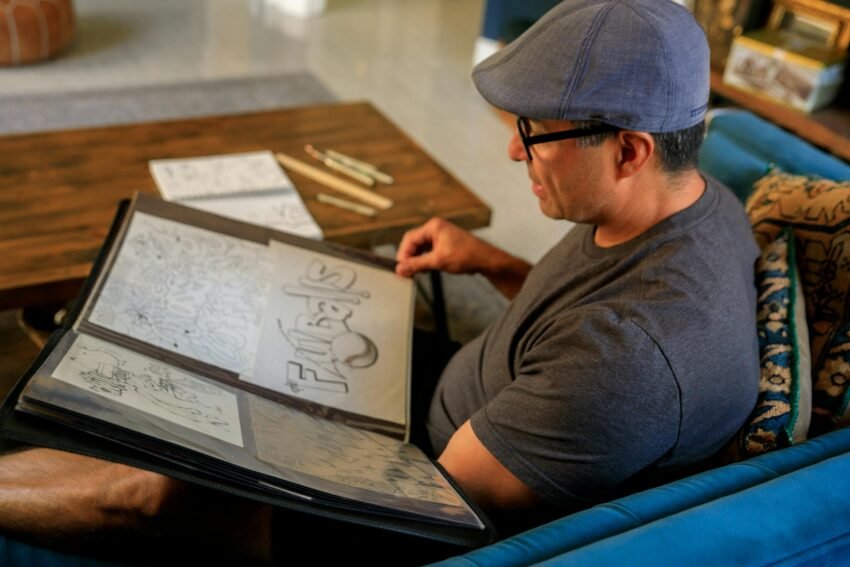Introduction: Understanding the Importance of a Portfolio
As a content creator, your portfolio is more than just a collection of your work—it’s your digital handshake, your calling card, your chance to make a powerful first impression. When I first embarked on my journey as a content creator, I didn’t fully grasp the incredible potential a well-crafted portfolio held. It’s not just about amassing a bunch of links or images; it’s about weaving a narrative that reflects not only your skills but also your unique voice and style. A robust portfolio elevates your credibility, making you stand out in a crowded digital landscape.
When I finally took the plunge and created my first portfolio, I noticed how it instantly spoke for me in rooms and forums where I wasn’t physically present. I realized that a well-organized showcase of my work didn’t just display what I’d done—it showcased what I was capable of doing. If you’re looking for examples to inspire your portfolio, you might want to check out these standout social media portfolios.

Building the Foundation of Your Portfolio
The first step to creating a standout portfolio is understanding your brand identity. When I started, I struggled with defining what made me unique. What did I want my content to say? I spent time reflecting on my interests, values, and the impact I wanted my work to have. This clarity became the cornerstone of my brand identity.
Understanding your brand will naturally lead you to your unique style. Maybe it’s the distinctive way you edit videos, the voice you use in your blog posts, or the themes you explore through photography. Identify these aspects as they form the essence of your digital presence. When people see your work, they should be able to say, “Oh, that’s definitely from [Your Name]!”
And then there’s your biography—a clear, captivating bio that enhances your brand story. It’s not just about listing accomplishments. It’s about connecting with your audience on a personal level. I found that sharing glimpses of my journey, my inspirations, and my goals was invaluable in building this connection.
Showcasing Your Best Work: Selecting and Curating Content
Next comes the task of selecting content that resonates with your niche and target audience. This was a revelation for me—understanding that not every piece of work belonged in my portfolio. Just because you can do everything doesn’t mean you should showcase everything. Resources like Copyfol.io’s guide are invaluable for understanding how to showcase work that aligns with your niche and demonstrates your expertise.
Tailor your content to appeal specifically to your target audience. When I created my portfolio, I focused on pieces that potential clients in my niche would find relevant and engaging. Remember, the goal is to leave them wanting more.
Emphasizing quality over quantity was a game-changer for me. It’s tempting to include every single piece you’re proud of, but a curated selection of high-quality examples will speak volumes about your attention to detail and the standards you hold yourself to. Wix’s portfolio examples provide excellent guidance on curating for impact.
Organizing Your Portfolio for Maximum Impact
Once you’ve selected your best work, organizing it effectively is crucial. I learned that a coherent and impactful flow keeps visitors engaged. Lay out your work in a way that tells a story—your story. Perhaps you start with a powerful piece that defines your best work, followed by a selection showcasing your range and versatility.
Consider using multimedia elements to keep viewers engaged. High-quality images, videos, descriptive text, and even interactive elements can create a rich experience. For instance, showcasing a behind-the-scenes video of your creative process worked wonders in drawing people into my personal narrative.
Effective portfolio layouts enhance the user experience by making navigation intuitive and aesthetically pleasing. Play around with different layouts until you find one that highlights your work best while keeping the viewer’s journey seamless.
Leveraging Tools and Platforms for Portfolio Creation
With the foundation and organization in place, the next step is choosing the right tools and platforms. I’m a fan of platforms like Behance, Adobe Portfolio, and WordPress. Each has its pros and cons. For example, Behance is excellent for visibility within the creative community, while WordPress offers more flexibility in design and customization.
However, it’s not just about selecting a platform—it’s about how you use it. Leveraging social media can be a powerful ally in driving traffic and engagement to your portfolio. By consistently sharing snippets of your work on platforms like Instagram, LinkedIn, and Twitter, as suggested by Robyn Roste, I noticed an increase in visits to my portfolio.
Optimizing for Visibility: SEO and Beyond
Once your portfolio is up, optimizing for visibility is vital. Incorporating basic SEO techniques ensures your portfolio is easily discoverable. This was a learning curve for me, but strategic keyword integration transformed my visibility online. Incorporate relevant keywords into your titles, descriptions, and even image tags.
Additionally, think beyond SEO. Networking and collaborations significantly boosted my portfolio’s visibility. Engaging with fellow creators, participating in webinars, and joining online forums proved invaluable in driving traffic and getting noticed. You can find additional strategies by visiting Publuu’s guide.
Conclusion: Maintaining and Updating Your Portfolio
Creating a portfolio is not a one-time task—it’s an ongoing project. Regularly updating your portfolio with new and relevant creations keeps your content fresh and signals your ongoing growth. I make it a point to revisit mine every few months, refreshing old content and adding new work.
Feedback and analytics are your friends. I’ve learned to solicit opinions from trusted peers and analyze visitor data to refine and improve my portfolio. This continuous adaptation keeps it not only current but also dynamic. For more ongoing techniques, The Social Media CEO offers great insights.
Remember, the world of content creation is always evolving, and staying ahead of the trends requires dedication. Approach your portfolio with the same passion and creativity you put into your content, and let it be a beacon of your journey as a content creator.
